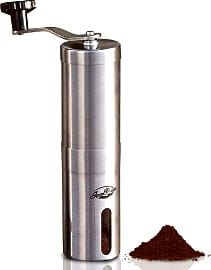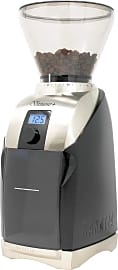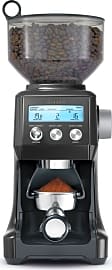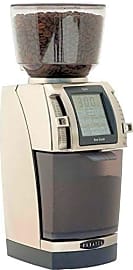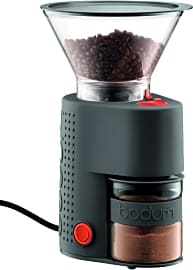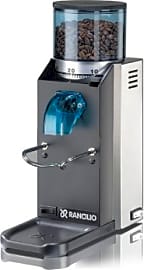The 10 Best Burr Grinders

This wiki has been updated 39 times since it was first published in March of 2015. If you refuse to settle for anything less than a perfect cup of joe every morning, then you will need one of these capable burr grinders, any of which can provide you with the perfect coarseness for your beans. We've included a variety of versatile models with large capacities and customizable settings that let you attain the optimal flavor for any brewing method you wish to utilize. When users buy our independently chosen editorial picks, we may earn commissions to help fund the Wiki.
Editor's Notes
August 28, 2020:
Coffee is almost a "religion" of sorts. When you think about it, the beverage definitely serves to bring people together (i.e. families and friends). For me, once I get past the practical need to wake up in the morning with a jolt of caffeine, I can say that coffee creates a feeling of warmth and excitement that makes it possible to face the challenges of the day ahead. A cup of joe convinces me that I have a whole day to accomplish almost anything I put my mind to. This isn't to say that whole coffee beans are solely responsible for this feeling, but I guess it's the complexity and variations in style and flavor (and the anticipation of drinking it) that evoke a sense of hope. With that being said, it's only natural to want a machine capable of extracting the full aroma and flavor of any type of bean you choose to process.
This year, we've added the Baratza Virtuoso Plus for its digital countdown timer and ability to adjust actual grinding time to increments of one tenth of a second, which allows for precise dosing. Its collection bin also offers convenient backlighting, which I don't see very often in many of these machines. However, it's definitely a helpful feature that prevents the need to remove the bin first to see how much of your grounds remain.
We've also included the Mueller Ultra-Grind due to its wide range of adjustable coarseness settings and removable top burr for easy cleaning.
Although the Krups GX420851 does have some useful features, several complaints about the mess created by its open bin design and quality control in terms of jamming prompted the decision to remove it.
April 29, 2019:
An individual's preference for coffee is always personal. Some of us prefer coarse grinds, while others want the smoothness and strength of espresso to wake us up in the morning. That said, having a burr grinder that is both powerful and versatile enough to process all grind types with maximum flavor is extremely important. For that reason, I made a concerted effort to include multifunctional machines that can work for the entire "spectrum" of coffee aficionados.
I added the Baratza Forte BG for its extremely durable metal exterior, 260 grind settings, digital touchscreen, and grind-by-weight functionality for pinpoint coffee precision. I thought the Krups GX420851 was a formidable option due to the detachable hopper with auto-closing trap doors for easy transport and storage of unused beans. Included the Eureka Mignon Specialita for its insulated steel casing, which significantly reduces its noise levels during operation. Its extra-wide internal chute also helps prevent coffee grounds from clumping up inside it. Maintained the Breville Smart Grinder Pro for its smart dosing technology and easy-to-read LCD. I added the Baratza Vario-W for its ceramic flat burrs and bean shutoff feature, which helps to reduce wasted coffee. I maintained the Capresso Infinity because of the internal reduction gears and their ability to reduce the buildup of excess heat. Both the Hario Skerton Plus and JavaPresse Manual can be operated using a convenient hand crank, the former of which leverages a dishwasher-safe glass storage bowl and the latter of which utilizes a dual-plated ceramic conical burr assembly for ensuring grind consistency. Maintained the Rancilio Rocky for its transparent, blue-tinted collection hopper and built-in thermal overload protection.
Special Honors
Mahlkonig EK43S The Mahlkonig EK43S is a commercial-quality machine with a 1,300-watt motor that is powerful enough to spin the 98-millimeter flat burrs at a rate of 1,350 revolutions per minute, making it possible to grind up to one pound of whole beans in less than 30 seconds. Its hopper can hold 1.76 pounds, while the sturdy grind adjustment knob and lowered spout make it ideal for single dosing espresso and pour over coffee. This one is also short enough to fit under cabinets in small cafes. mahlkonigusa.com
Unic Ceado E37Z While it's not exactly the cheapest machine around, nor something you'd keep in a small home kitchen, the Unic Ceado E37Z does allow you to create customized grinding profiles and experiment with different types of extractions when making espresso. Thanks to an adjustable motor speed between 600 and 1,500 revolutions per minute, you can produce distinct flavor profiles, even when you're using the same beans. Coated with diamond-like carbon, the 83-millimeter burr grinding chamber is positioned at a 45-degree angle with total zero retention for both its input and output, meaning that very few grounds collect inside the machine to contaminate future batches or compromise the resulting taste. This machine also features integrated thermal overload protection. unic-usa.com
Burr, It's Cold Out There
This excessive heat alters the taste of the coffee, whereas the burr grinder does not have this variable.
A burr grinder, also known as a burr mill, is an appliance used to grind coffee beans and other food particles. The burr grinder is composed of two abrasive surfaces that come into contact with food particles for the purpose of grinding them down into a powder. The larger the gap between the two rough surfaces of the grinder, the coarser the grind will be. The opposite is also true; a smaller gap results in a finer grind. A burr grinder may be manually operated or powered by electricity. Both power sources are capable of a quality grind.
A burr grinder should not be confused with a blade mill, which is composed of a spinning blade that repeatedly comes in contact with the particles, resulting in a grind. Its design is similar to that of a propeller blade. While effective, the blade mill is usually seen as inferior to the burr grinder because of the heat and friction the blade mill produces. This excessive heat alters the taste of the coffee, whereas the burr grinder does not have this variable.
A food-grade burr grinder can accommodate peppercorns, flax seed, flour, and coffee. If you've frequented Italian restaurants in the past, you're probably familiar with those large wooden wands used by the waiters to grind peppercorns over your salad; this is a prime example of a burr grinder in action. Obviously, the wand is a manually-operated burr grinder that makes it easy for wait staff to carry when traveling between tables.
For The Coffee Fanatic
Depending on your coffee drinking habits, you might want to factor in the number of coffee cups that can be ground with your grinder. Personally, I believe that you should grind only the amount of beans you intend to use in that very sitting. Larger burr grinders give you the option of grinding up the twelve cups of coffee at once, which may be excessive when brewing for just yourself or a small family.
Personally, I believe that you should grind only the amount of beans you intend to use in that very sitting.
Be aware that storing excess grounds for a long period of time may result in a loss of flavor by the time you brew again. Coffee beans have a very short window of freshness once they're ground. Of course, when brewing large amounts of coffee at one time for large events, investing in a burr grinder is definitely a wises decision.
The benefit of grinding your beans versus buying pre-ground coffee is the variety of grain size. Some burr grinders can produce fine espresso and measure the volume in cups for you. These machines will also produce a fine grind for Turkish coffee consumption. If you prefer a coarse grind, the burr grinder will be able to accommodate that as well.
Finally, if you intend to purchase an electric-powered grinder, take a moment to consider the motor size; a small motor may take significantly longer to grind the beans and emit loud noises in the process. If possible, test the grinder before you purchase it.
A Brief History Of The Burr Grinder
The first burr grinders were invented before the advent of electricity and were manually operated. The original burr grinder surfaced in England in 1799, created by a blacksmith named Richard Dearmann. The widely popular grinder made its way across the pond and it was embraced by Americans as a simple way to grind their coffee beans. Increase Wilson patented the first coffee grinder to be installed on a wall in 1818. This design was similar to the pencil sharpeners you remember from grade school.
The durable grinder was also accommodating to coffee beans and other soft food particles.
Peugeot, known today as the popular French car manufacturer, invented the first ever pepper grinder in 1842. The steel prototype was specifically designed for the tough exteriors of peppercorns. The durable grinder was also accommodating to coffee beans and other soft food particles.
The burr grinder's manual design hasn't changed much over the last 150 years. The adage, "if it ain't broke, don't fix it" couldn't apply more here. However, the electric models are constantly changing and improving in motor size, design, and capacity. Ideally, a quality grinder should be a staple in your kitchen and designed to last decades. The emergence of do-it-yourself gourmet coffee has many consumers creating cafe-quality brews at home for a fraction of the cost. The burr grinder is your investment for excellent homemade coffee.


